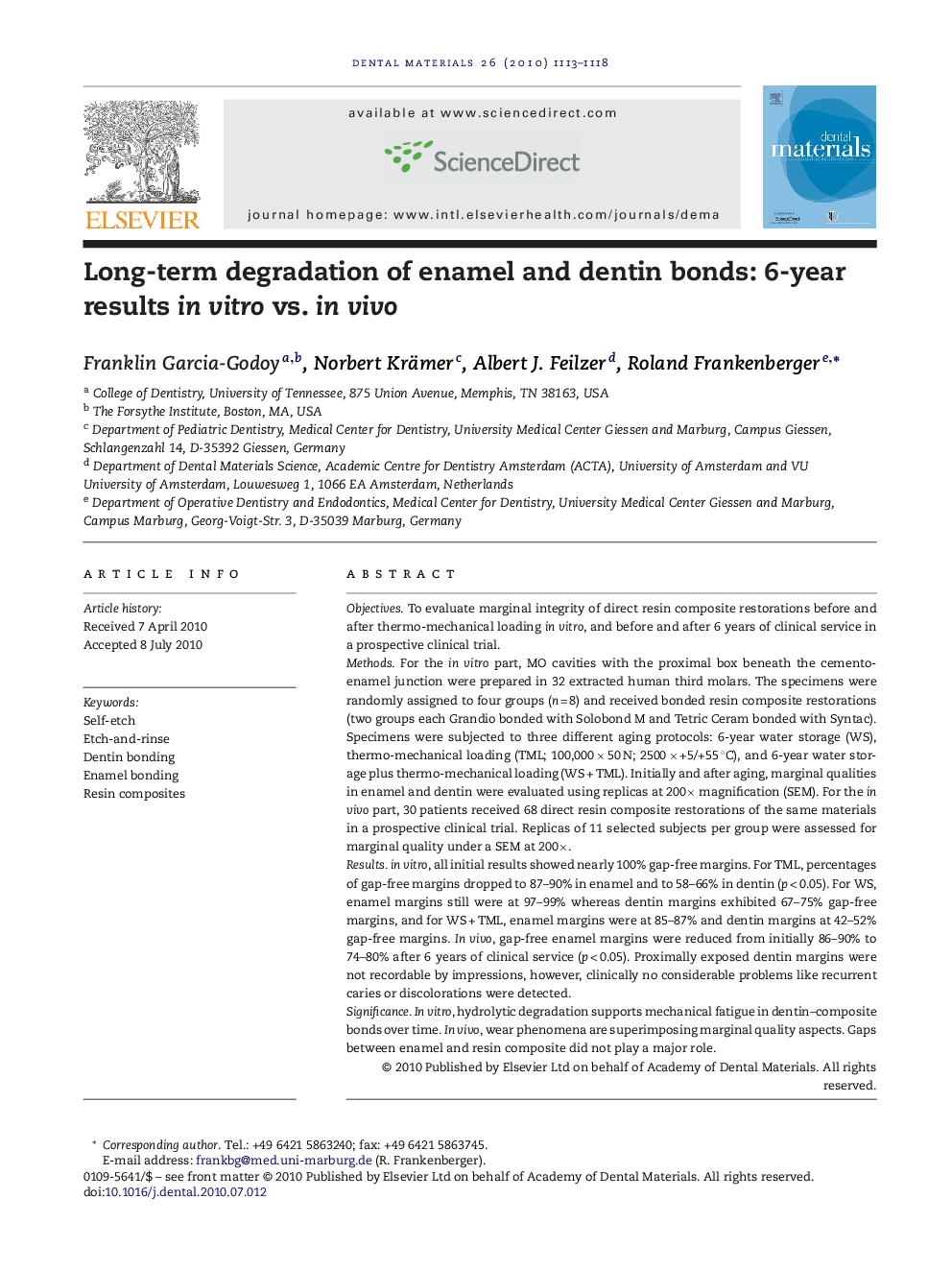| کد مقاله | کد نشریه | سال انتشار | مقاله انگلیسی | نسخه تمام متن |
|---|---|---|---|---|
| 1421466 | 986412 | 2010 | 6 صفحه PDF | دانلود رایگان |

ObjectivesTo evaluate marginal integrity of direct resin composite restorations before and after thermo-mechanical loading in vitro, and before and after 6 years of clinical service in a prospective clinical trial.MethodsFor the in vitro part, MO cavities with the proximal box beneath the cemento-enamel junction were prepared in 32 extracted human third molars. The specimens were randomly assigned to four groups (n = 8) and received bonded resin composite restorations (two groups each Grandio bonded with Solobond M and Tetric Ceram bonded with Syntac). Specimens were subjected to three different aging protocols: 6-year water storage (WS), thermo-mechanical loading (TML; 100,000 × 50 N; 2500 × +5/+55 °C), and 6-year water storage plus thermo-mechanical loading (WS + TML). Initially and after aging, marginal qualities in enamel and dentin were evaluated using replicas at 200× magnification (SEM). For the in vivo part, 30 patients received 68 direct resin composite restorations of the same materials in a prospective clinical trial. Replicas of 11 selected subjects per group were assessed for marginal quality under a SEM at 200×.Resultsin vitro, all initial results showed nearly 100% gap-free margins. For TML, percentages of gap-free margins dropped to 87–90% in enamel and to 58–66% in dentin (p < 0.05). For WS, enamel margins still were at 97–99% whereas dentin margins exhibited 67–75% gap-free margins, and for WS + TML, enamel margins were at 85–87% and dentin margins at 42–52% gap-free margins. In vivo, gap-free enamel margins were reduced from initially 86–90% to 74–80% after 6 years of clinical service (p < 0.05). Proximally exposed dentin margins were not recordable by impressions, however, clinically no considerable problems like recurrent caries or discolorations were detected.SignificanceIn vitro, hydrolytic degradation supports mechanical fatigue in dentin–composite bonds over time. In vivo, wear phenomena are superimposing marginal quality aspects. Gaps between enamel and resin composite did not play a major role.
Journal: Dental Materials - Volume 26, Issue 11, November 2010, Pages 1113–1118